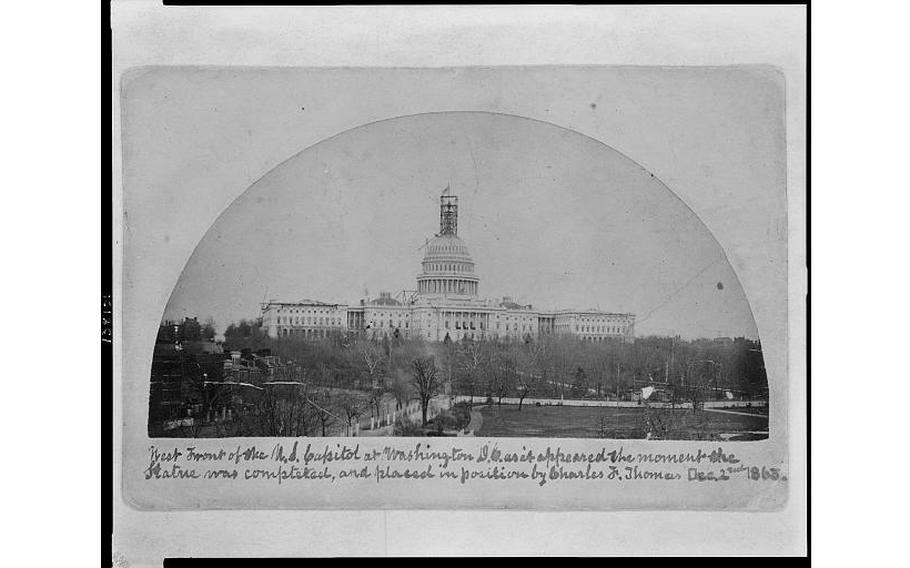
The U.S. Capitol the day the final piece of the Statue of Freedom was placed atop the dome, Dec. 2, 1863. It is not known whether Philip Reed, the enslaved man who played an integral role in its creation, was there to see it. (Library of Congress)
The U.S. Capitol is full of art: sculptures, portraits, murals depicting Founding Fathers, suffragist mothers and symbols of the nation's ideals. Perhaps the grandest of these, standing atop the Capitol dome like a national wedding-cake topper, is the bronze "Statue of Freedom."
It wouldn't exist without the artistry and genius of an enslaved man named Philip Reed.
Almost nothing is known about Reed before he was purchased in 1839 in Charleston, S.C., when he was about 18 years old. Was he separated from his mother, or a spouse, or a child? Where did he get his last name, then spelled "Reid"? And how was he, as the man who purchased him later said, already a "first rate plasterer by trade"?
That purchaser, Clark Mills, was also a plasterer by trade and used his bride's dowry to "invest" in another set of skilled hands whom he didn't have to pay. The two men would work side by side for the next two decades, according to genealogist John Philip Colletta, who recently unearthed new details about Reed's life.
Mills also used Reed to fill in for him while he taught himself new skills — first, casting bronze busts from plaster life masks, and then sculpting marble. After Mills' artistic reputation grew in South Carolina, he landed the commission of a lifetime, a nine-foot bronze monument to Andrew Jackson that would stand in front of the White House. It is highly likely that Mills took Reed with him when he moved to Washington in 1848, according to Colletta, for when a sculptor friend visiting Mills' new studio on 15th Street and Pennsylvania Avenue remarked on how physically demanding some of the plasterwork must be, Mills replied that he "kept a n----- for that," the sculptor recalled in a letter to his wife.
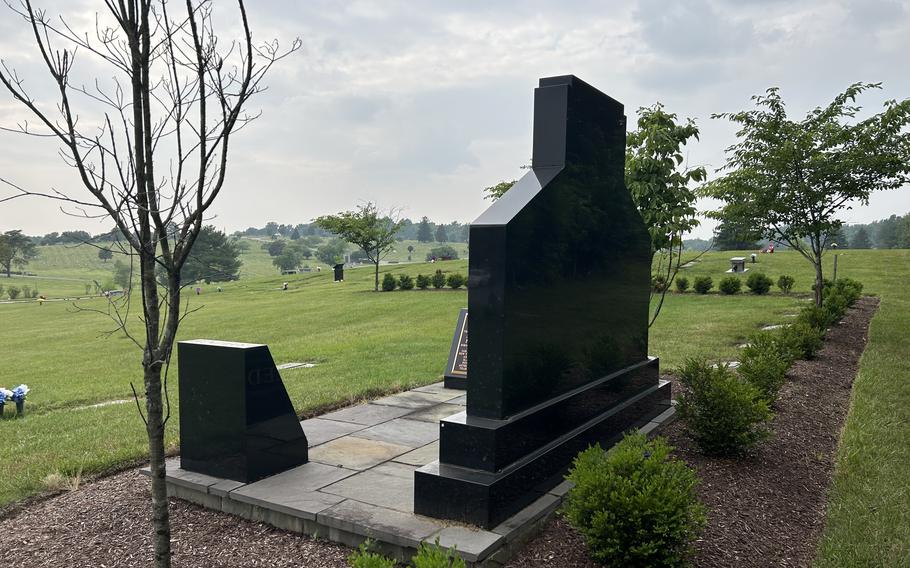
Seven miles southwest of the Northup-Reed monument in National Harmony Memorial Park in Landover, Md., the U.S. Capitol dome carries the Statue of Freedom, obscured here by clouds and smoke from wildfires in Canada. (Gillian Brockell/The Washington Post)
The commission for the statue wasn't just artistic; a bronze monument of this size had never been attempted in the United States. The only foundries big enough and craftsmen experienced enough for the project were in Europe. Mills hired a German metalworker to help him build a foundry and teach him and his team how to make molds and heat the furnace properly to cast bronze. But the lessons were never finished; the German, apparently having some argument with Mills, left in a huff, Colletta wrote, leaving Mills and his team to experiment for a few years until they figured out the rest of the process for themselves. It's likely Reed was integral to this, because a few years later, Mills added "foundry worker" to the list of things at which Reed was "highly skilled."
The Jackson statue was unveiled to ecstatic fanfare in 1853, making Mills an overnight star, and rich. He soon acquired a 115-acre farm and country house in Northeast Washington, an even bigger studio and foundry, seven prize horses, and eight more enslaved people to maintain it all. (The WMATA Bus Bladensburg Division and Bad Axe Throwing now sit on the site.)
The Statue of Freedom on top of the Capitol didn't start out as a Clark Mills project. The commission went to Thomas Crawford, an American sculptor living in Italy. He drew plans for a classical-style goddess in flowing robes and wearing a "liberty cap," a cap used in ancient Rome to denote enslaved people who had been freed.
The liberty cap was a common symbol used in art during the American Revolution but lately had been taken up by abolitionists, and the plans for the sculpture caught the ire of Jefferson Davis, then the secretary of war, who was overseeing the expansion of the Capitol grounds. An ardent supporter of slavery, Davis objected to the cap and asked Crawford to come up with something a little less freedom-y and a little more warlike, according to the Architect of the Capitol. Crawford designed a helmet festooned with feathers, which, while not actually resembling Native American headdresses, was meant as a nod to them.
Neither Crawford nor Davis would see the final statue unveiled. Crawford died suddenly in 1857, not long after finishing the plaster model of Freedom. His widow had the model cut into five pieces and shipped to the United States, where an Italian artist put it back together with interior bolts and new layers of plaster to cover the seams. The model stood for more than a year in Statuary Hall, during which time Davis became president of the Confederacy.
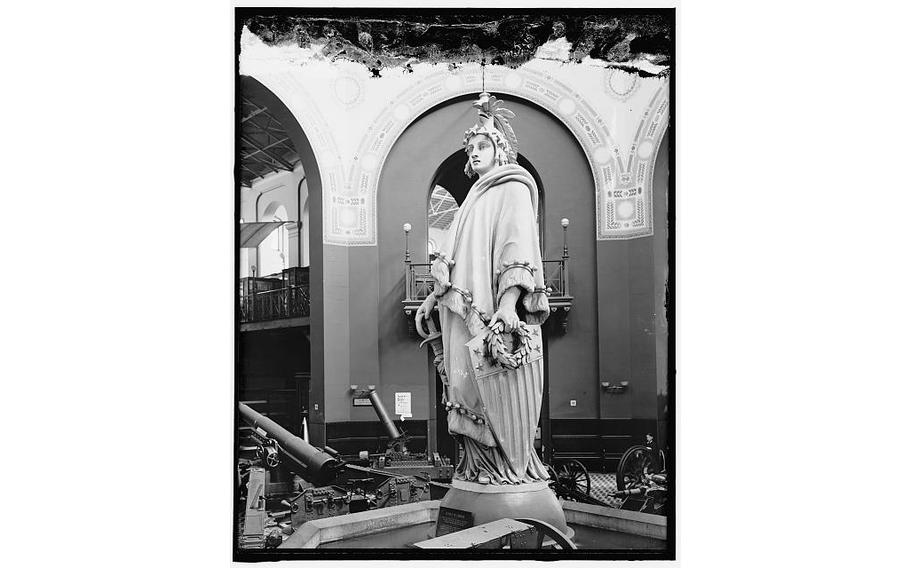
The plaster model of the Statue of Freedom stood inside the U.S. Capitol before it was separated and cast in bronze. It now stands in the Capitol Visitor Center. (Harris & Ewing/Library of Congress)
The government hired Mills to complete the job — casting the plaster model in bronze — paying him a huge sum of $400 (nearly $15,000 today) a month, plus expenses for materials and labor. Mills, though, immediately ran into a big problem: The Italian artist, betting that only he could find the delicate seams to cut it into pieces small enough for the foundry, refused to help without a major financial windfall.
How Reed saved the day became legendary. The most detailed account comes from the writer S.D. Wyeth, who heard the story from Mills's son Fisk. The "highly intelligent" Reed had an idea, Wyeth wrote:
"His plan of working was this: a pulley and tackle was brought into use, and its hook inserted into an iron eye affixed to the head of the figure — the rope was then gently strained repeatedly until the uppermost joining of the top section of the model began to make a faint appearance. This gave some indication as to the whereabouts of its bolts inside, lead[ing] to their discovery; and thus, finally, one after another of the sections was discovered, their bolts unloosed, and the model, uninjured, made ready for the foundry."
Once in the foundry, Reed worked seven days a week for nine months while the bronze was cast. We know this because Mills kept detailed records and charged the government $1.25 a day — more than his free laborers made — for Reed's wage. Mills pocketed Reed's wage six days a week; Reed later filed for and received his wage for 33 Sundays between July 1860 and May 1861, when he was "keeping up fires under the moulds."
The bronze statue was completed by February 1862. Two months later, an act of Congress freed all enslaved people in Washington, including Reed. Much of what we know about him comes from Mills' petition to be compensated for the loss of his "property." Describing Reed as "aged 42 years, mulatto [mixed-race] color, short in stature, in good health, not prepossessing in appearance but smart in mind," he asked to be compensated $1,500 for Reed — three times the amount he asked for the other people he had enslaved. (Mills received only a fraction of his request, about which he "fumed," Colletta wrote.)
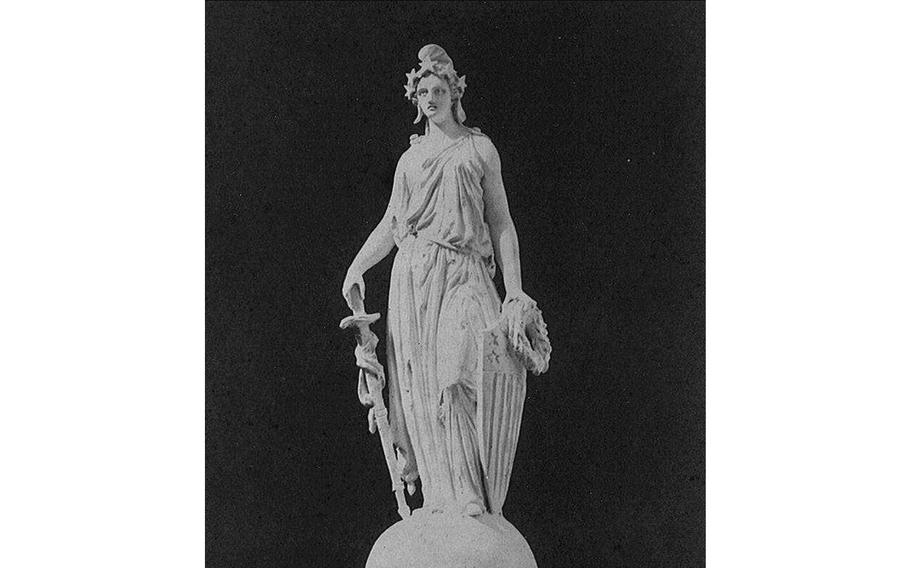
An early model of the Statue of Freedom shows Freedom wearing a liberty cap. Secretary of War Jefferson Davis asked Thomas Crawford to change it because of the cap’s association with the abolition movement. (Library of Congress)
According to Wyeth in 1865, "Mr. Reed, the former slave, is now in business for himself, and highly esteemed by all who know him." Census records show that he soon married and had a son. Historians have noted that before his emancipation, his last name was spelled "Reid" in official records, while afterward it was spelled "Reed," suggesting a personal preference. Colletta also noted that after Mills' 1862 compensation hearing, during which Reed had to testify, there's no evidence the two ever saw each other again, suggesting there was no love lost between them.
The last piece of the statue was placed atop the Capitol dome on Dec. 2, 1863. There are no records indicating whether Reed was there to see it.
Reed died in Washington in 1892, in his early 70s, far outliving his former enslaver. Both Colletta and a genealogist writing for Ancestry Magazine were unable to find evidence of living relatives. In death, Reed's remains have followed the path of many in the District's Black community — priced out by developers and pushed out to Prince George's County.
His remains and his gravestone first were moved in 1895, from a cemetery near the Capitol to the Columbian Harmony Cemetery, a Black burial ground farther north on Rhode Island Avenue Northeast. In 1960, developers acquired the land and moved the remains of 37,000 people to National Harmony Memorial Park in Landover, Md. Remains unclaimed by family, including Reed's, were placed in an unmarked common grave. It's unclear what happened to Reed's gravestone, though a recent discovery in Virginia revealed that thousands of grave markers from Columbian Harmony were tossed into the Potomac River for erosion control.
A plaque honoring Reed went up at the new site in 2014; nowadays there's an even bigger marker, honoring both Reed and Solomon Northup, another of Washington's famous Black residents. (It remains unknown when Northup died or where he was buried.)
Etched from black stone, the marker to Philip Reed is beautiful, if hard to find, sitting at the back of the cemetery's rolling green hills near the office. On a clear day, of which there have lately been few, one can look southwest and, seven miles away, barely make out the monument by Philip Reed.
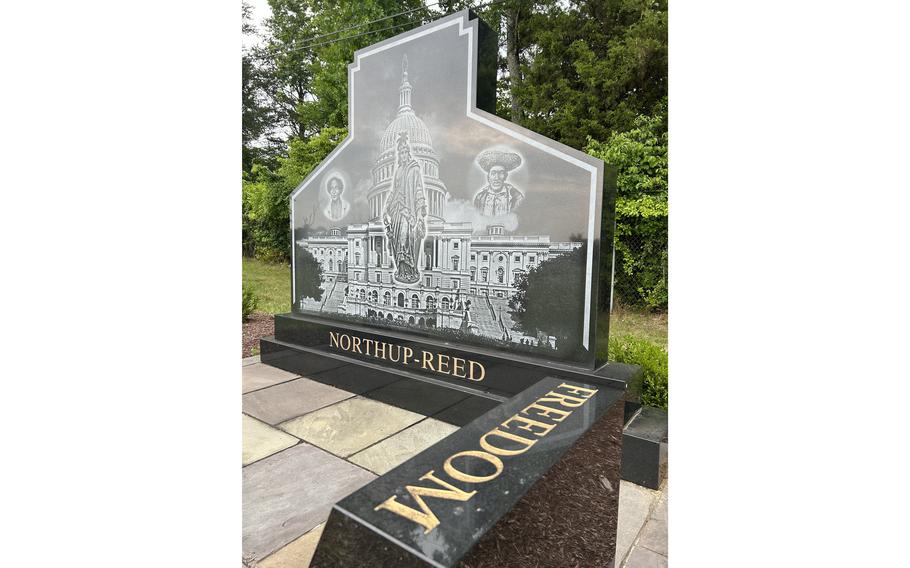
The monument to Solomon Northup and Philip Reed at National Harmony Memorial Park. There are no known images of Reed; the portrait on the right side comes from an 1881 engraving of an enslaved man in Washington. (Gillian Brockell/The Washington Post)